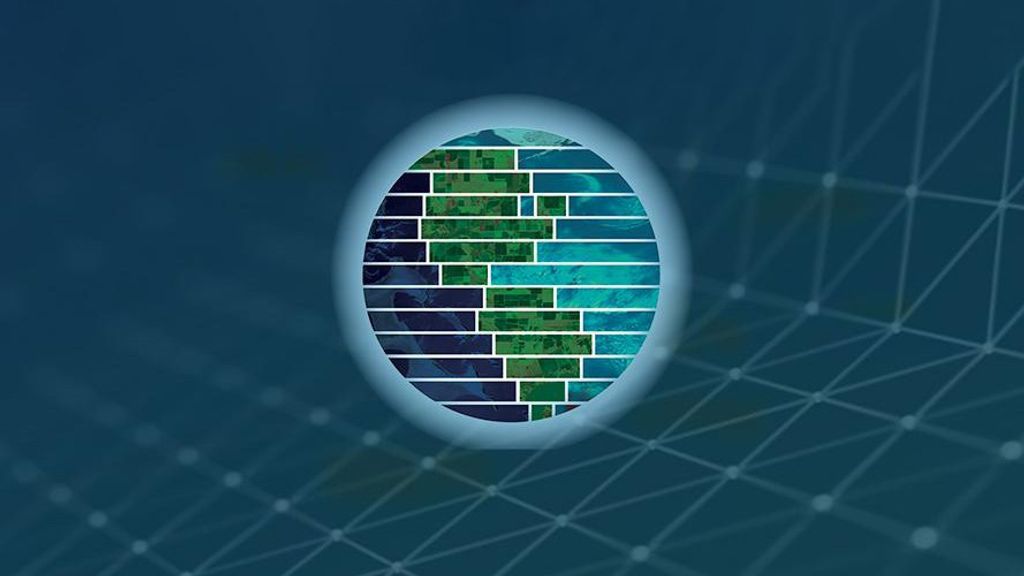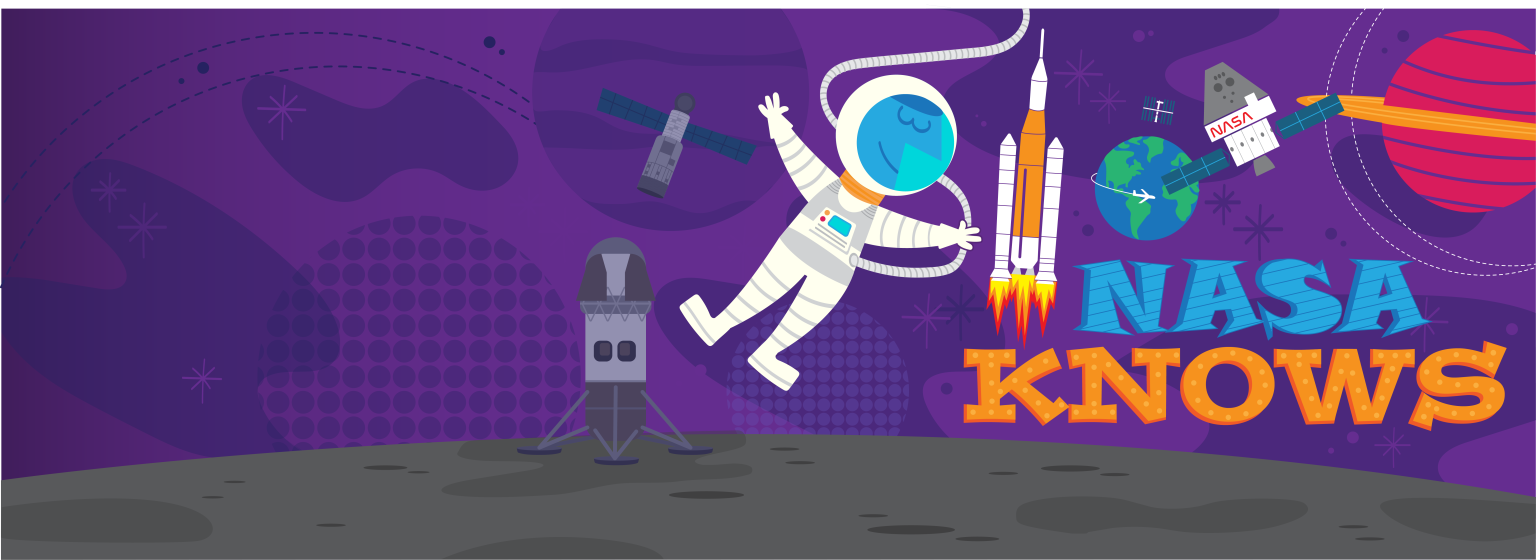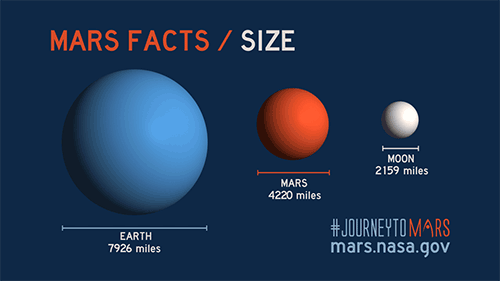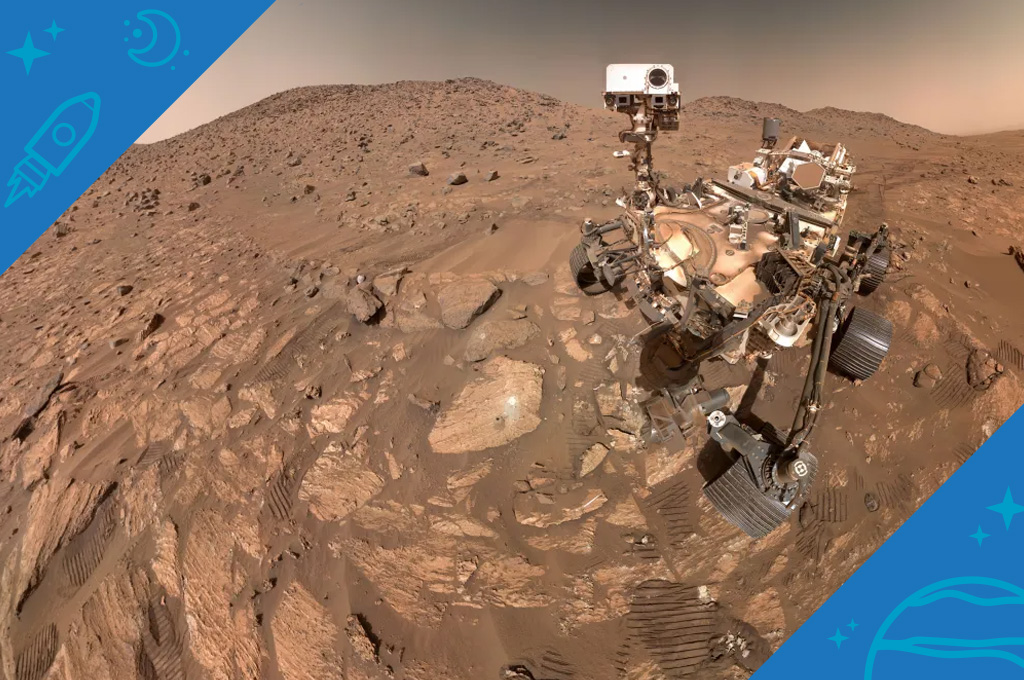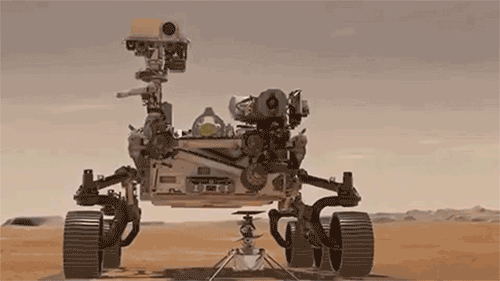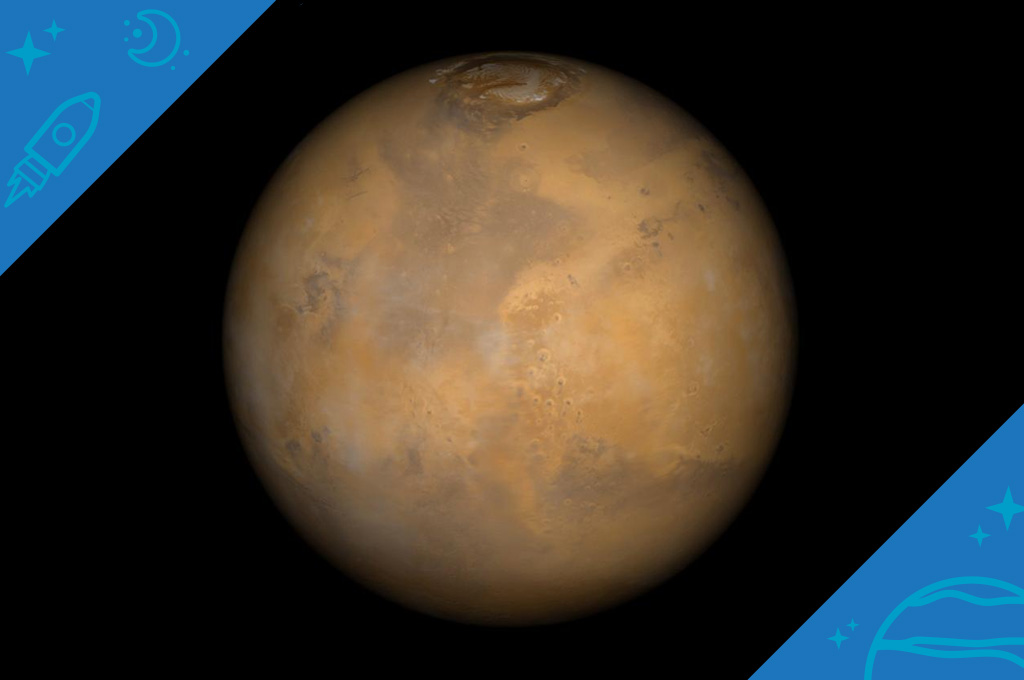This article is for students grades K-4.
Mars is a planet. It is the fourth planet from the Sun. It is the next planet beyond Earth. Mars is more than 142 million miles from the Sun. The planet is about half the size of Earth. A day on Mars is 24.6 hours. A year on Mars is 687 Earth days. Mars is known as the Red Planet. It is red because the soil looks like rusty iron. Mars has two small moons. Their names are Phobos (FOE-bohs) and Deimos (DEE-mohs).
What Is Mars Like?
Mars is very cold. The average temperature on Mars is minus 80 degrees Fahrenheit — way below freezing!
Mars is rocky with canyons, volcanoes and craters all over it. Red dust covers almost all of Mars. It has clouds and wind, just as Earth does. Sometimes the wind blows the red dust into a dust storm. Tiny dust storms can look like tornados, and large ones can cover the whole planet! Mars has about one-third the gravity of Earth. A rock dropped on Mars would fall slower than a rock dropped on Earth. Things weigh less on Mars than they weigh on Earth. A person who weighs 100 pounds on Earth would only weigh about 38 pounds on Mars because of less gravity.
The air around Mars does not have much oxygen. People need oxygen to breathe. The air is mostly a gas called carbon dioxide.
What Has NASA Learned About Mars?
NASA has used both orbiting spacecraft (spacecraft that fly around the planet) and robots on the ground to learn more about Mars. In 1965, Mariner 4 was the first NASA spacecraft to get a close look at the planet. In 1976, Viking 1 and Viking 2 were the first NASA spacecraft to land on Mars. They took pictures and explored the ground. Since then, more spacecraft have flown near or landed on Mars.
NASA’s Spirit and Opportunity rovers landed on Mars in January 2004. They found proof that water once flowed on Mars. Living things need water to survive. So, any sign of water on Mars would mean that there could be, or could have been, life on the planet.
How Is NASA Exploring Mars Today?
Today, three NASA spacecraft are circling, or orbiting Mars. The spacecraft are using scientific tools to measure the volcanoes, canyons, craters, temperature and the kinds of minerals on Mars. They also are taking pictures and searching for water.
A robot that moves around the planet, called a rover, is exploring the Red Planet’s land. The rover is named Curiosity. The rover travels around taking pictures and looking closely at the planet’s soil and rocks. A robot that stays in one place is called a lander. The InSight lander is measuring earthquakes on Mars, called marsquakes. NASA uses pictures and information from the spacecraft, rover and lander to learn more about Mars.
How Will NASA Explore Mars in the Future?
NASA wants to send people to explore the Red Planet. But first, the space agency will send more robots. The Perseverance rover carried a small helicopter. They landed on Mars on Feb. 18, 2021. One of the rover’s jobs will be to collect rocks and soil. NASA plans to bring the rocks and soil back to Earth on a future mission. This will be the first time a mission will bring something home from Mars. The small helicopter is named Ingenuity. The helicopter will disconnect from the rover and see if it can fly by itself on Mars. If it works, NASA could build other helicopters like it to help explore Mars or other planets.
A rover and a small helicopter are studying Mars.
NASA is studying new kinds of homes where astronauts could live in space. Scientists are studying how people in space could grow plants for food. By watching what happens to astronauts on the International Space Station, scientists are finding out how living in space affects humans. All of these studies and experiments are helping NASA get ready to send people to Mars.
More About Mars
NASA Space Place: All About Mars
NASA Space Place: The Mars Rovers
Color the Mars Rover and Helicopter
Make a Mars Helicopter Model
Mars Activities for Kids
Make a Paper Mars Helicopter
Explore Mars: A Mars Rover Game










